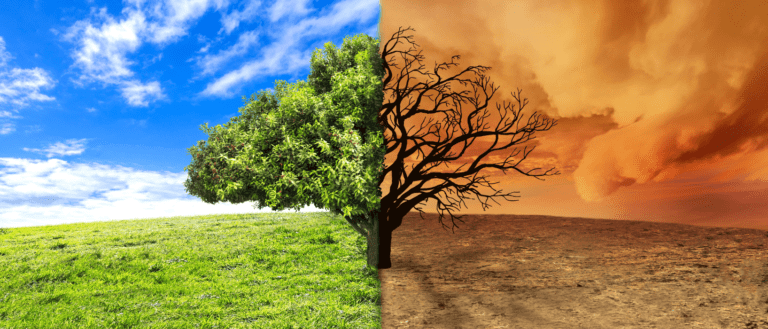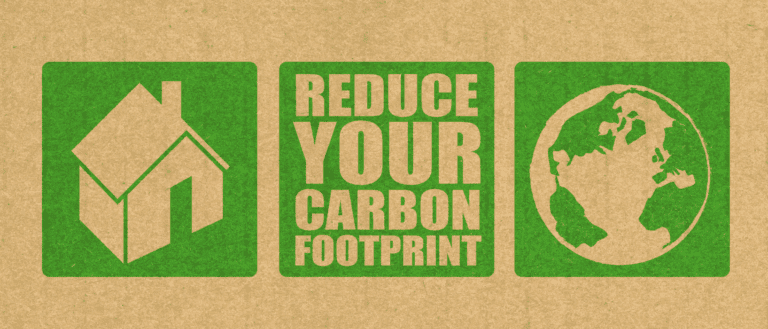Methodology behind the Science
Did you know that every person, business, event and product leaves a carbon footprint and that Carbon footprints are the total greenhouse gas emissions caused by their activities, which lead to Climate Change?

What is Climate Change?

The past few years have seen heatwaves and wildfires spread across Europe, putting the climate crisis at the forefront of everyone’s minds. Greenhouse gases (Link to FAQ) trap heat in the atmosphere and cause global warming. Unfortunately, Greenhouse gas emissions keep going up and with that, so does the earth’s temperature.
The top 20 hottest years on record have all happened since 1998. For many, this can cause feelings of anxiety and helplessness about the future.
Yet, it doesn’t have to be that way. While it’s not a pleasant experience, climate anxiety is a perfectly normal response. It signals to us that there’s something we need to pay attention to, there’s a threat, and that we need to act now.
Since 2020, only 15% of people have NOT made lifestyle changes to lower their carbon footprint, showing that most people are trying to make a difference. Yet, after doing a few basic (but helpful!) things such as recycling or reducing energy use at home, many still get stuck and don’t know what to do next.
This is where climate anxiety can become detrimental, leaving people feeling overwhelmed, like the problem is too big and nothing they can do will be enough. However, that couldn’t be further from the truth. Every single person taking action and reducing their footprint matters. They just need to know what actions to take.
Stopping climate change is a complex jigsaw that involves solutions from governments, industry, businesses and individuals.
Play it Green represents a few pieces on this jigsaw as we aim to lower carbon footprints and help educate people in an easy to digest way, creating behaviour change, whilst offsetting the unavoidable footprint through tree planting, all while creating a more egalitarian society. We have teamed up with sustainability experts to provide products, brands and services to educate and empower you to reduce your carbon footprint.
Not only that but we will use the profit we generate to invest in sustainable innovation to find new solutions to make our future certain.
We can’t do it alone, but together as one global community, we can stop climate change!
What is my Carbon Footprint?

A carbon footprint is an estimate of how much additional greenhouse gas emissions have taken place as a result of activity. This could be for a person, business, event or product.
For simplicity purposes, it is always expressed as a number in terms of carbon dioxide equivalent (CO2e). This is the amount of CO2 that would create the same amount of warming.
Buy a cup in a shop and it has a carbon footprint due to emissions from the manufacturing process and its transportation to the shop. It also has many more indirect emissions such as the emissions due to the extraction and processing of the raw materials to make the cup, or the machinery used in the cup factory, or the van used to transport the cup. Just this one cup, can provide you with thousands of different pathways to analyse if you wished to get an exact carbon footprint, so everyone tends to keep it as simple as possible.
A quick internet search will find you a carbon footprint calculator and they all just provide an estimate. There is no universal model so answers can vary however they do all follow the same basic principles. The typical carbon footprint calculator for a person considers what nation they live in and how much and what type of the following is consumed over the year: home energy, travel, goods purchases and food.
The average carbon footprint of a person varies from nation to nation: Citizens from China = 4.6T, Australia 20.6T, UK=9.7T, Kenya 0,3T. T= Tonnes.
Signing up to Play It Green with a subscription offsets your entire carbon footprint each month and even does a little bit more. Why do more? Because we are simply doing more good and we cannot ignore the indirect emissions we play a part in.
How many Trees should I plant to offset my footprint?

1 Tree stores on average 22kg of CO2 per year (European Environmental Agency) or 1 Tonne over its useful lifetime.
We use averages as tree sequestration rates vary due to the type, age and location (climate, altitude) of the tree. The average Mangrove tree will absorb 73.8 KG over a six-year period (see study).
Whilst the tree will absorb a lot more CO2 over its lifetime, Play It Green use 73.8Kg of CO2 at the offsetting value of 1 Tree as we wish to measure our impact in the short term.
156 trees per year (13 trees per month) will absorb (on average) more Carbon than a person in the UK produces and causes i.e. their carbon footprint. They are also more impactful as they restore lost ecosystems, provide homes for flora and fauna and help restore the climate to what it was. That’s the reason why play It Green suggests you to join our £5 per month subscription plan and plant 13 trees a month and 156 trees per year.
However, just planting trees WILL NO LONGER BE ENOUGH to stop climate change although it will help. By planting trees, we are lengthening the time we have left before the damage from climate change is irreversible. That’s the reason why we send you sustainable tips and encourage you to join our sustainable challenges to reduce your carbon footprints and influence the people around you. Go on one of the most rewarding journeys of your life and take your next step to a more sustainable future with Play It Green.

Other Information

Trees Planting

Create your own Forest Garden
